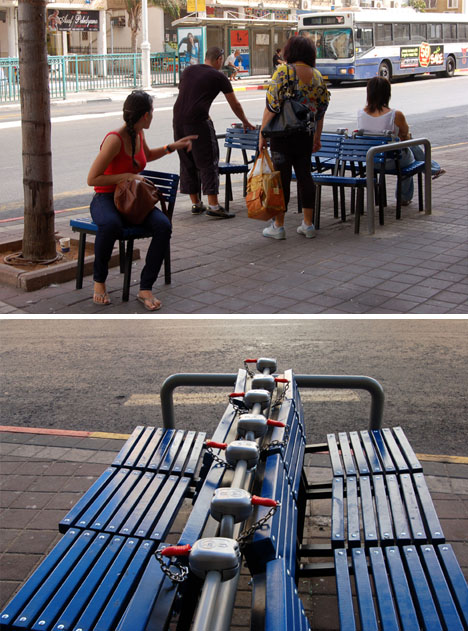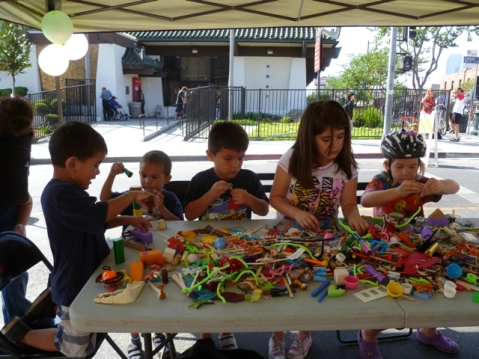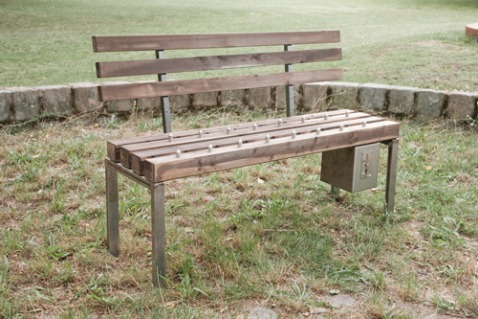Designing for the Vulnerability of the Other: What Love Looks Like in Urban Design
In an essay for The Guardian newspaper after the unfortunate celebrity photo leak of 2014, author Roxane Gay detailed why this sad and criminal act only reinforced an ongoing vulnerability women and other marginalized populations continue to experience in our society. She writes: “…privacy is a privilege. It is rarely enjoyed by women or transgender men and women, queer people or people of color. When you are an Other, you are always in danger of having your body or some other intimate part of yourself exposed in one way or another. A stranger reaches out and touches a pregnant woman’s belly. A man walking down the street offers an opinion on a woman’s appearance or implores her to smile. A group of teenagers driving by as a person of color walks on a sidewalk shout racial slurs, interrupting their quiet.” She continues: “For most people, privacy is little more than an illusion, one we create so we can feel less vulnerable as we move through the world, so we can believe some parts of ourselves are sacred and free from uninvited scrutiny.” She explains that what the hackers did only serves as a reminder to these women that “no matter who they are, they are still women. The are forever vulnerable”.
In a brief and passionate speech (above), actress and activist Laverne Cox discusses her experience being a transgender woman of color and illustrates how intersecting issues of transphobia, racism and misogyny can play out in public spaces. When Ms. Cox shares a past experience with street harassment, she attempts to highlight the precarious position in which she, and other trans women of color can sometimes find themselves. Ms. Cox ends the speech by suggesting that love may be a solution to putting an end to these types of incidences and quotes Cornell West who says “justice is what love looks like in public”.
In recent years, we seem to be hearing an increasing number of stories about violence perpetuated against transgender and gender non-conforming individuals as well as heart-wrenching accounts of young people who feel alone and hopeless and end up taking their own lives. These awful stories from our LGBTQQ community only add to a catalog of other similar stories of public harassment, violence and discrimination against racial and religious minorities. As someone who spends a lot of time thinking about how to create safer public spaces (our streets, parks, plazas and other gathering places), I wonder how these experiences can inform better urban planning, policy and design and how that design might contribute to the safety of our most vulnerable populations.
Existing design guidelines only take us so far. For example, public space design guidelines attempt to promote design strategies that create spaces inclusive of a wide variety of users and modes of transportation, but often fail to address social issues like gentrification. Other guidelines attempt to improve environments for specific reasons (like creating permeable surfaces for water retention or constructing a protected bike lane); or specific populations, often those with physical challenges (like the deaf community who orient themselves through vision and touch or seniors who may have fluctuating levels of mobility). These kinds of recommendations are an exciting addition to the world of urban design but they don’t necessarily address more comprehensive safety issues.
First, I want to take the opportunity to acknowledge my own limitations in discussing this work. I am a white, straight, able-bodied, cis woman, and I recognize that these attributes shape my outlook on the world. Additionally, I understand that my personal experiences, specifically my level of comfort in a public space, are not universal experiences. These statements may seem obvious but it may be less obvious how these attributes influence my professional work and the lens in which I view policy, planning and design initiatives for the general public. Am I humble enough to listen or try to empathize with the stories of our most vulnerable populations? How often do I think about the struggles of those who have dissimilar experiences to my own and how do I begin to create respectful dialogue with the hope of informing better urban design?
Community engagement is an integral part of a successful design process. Engagement can be achieved through strategic outreach like holding public meetings, reaching out to community leaders and taking time to listen to, and collect knowledge from the existing community. But I would also like to suggest that while less effective, design may also be informed through first-hand stories, like the essay and speech above, which are not traditional stories about design. After beginning the community engagement process, conducting research, and thinking more critically and contextually about these issues, how do we then use that information to create more relevant design? It may be helpful to begin by looking at larger issues around safety.
As I’ve previously discussed on this blog, my masters thesis investigated deterrents to bicycling for women in New York City. As this project evolved, my questions revolved much less around cycling and more about women’s relationship to safety in the built environment. While interviewing women and reading literature about perceptions of safety, what became very apparent to me is that there is no such thing as “irrational” fears. For example, a handful of women I spoke with told me that they were afraid to ride a bike because they thought someone in a van could pull up next to them and grab them. While this occurrence may not actually be a frequent event, these women’s fears shouldn’t be invalidated because when we understand the context for these fears, we recognize that they represent a larger issue about perceptions of safety that have been informed by personal experience. Instead of dismissing these concerns, we could ask ourselves what elements of urban design could contribute to someone feeling less likely that something like this would happen?
In the survey I conducted, the number one deterrent to bicycling for women was riding a bike a night. Some existing literature suggests that women are less likely to ride bikes because they are naturally more risk averse, but I would argue that it’s more likely that negative past experiences and particular circumstances (like traveling with children) make some women less willing to be alone in environments where they are uncertain of their surroundings. So how can we create a safer experience for these women if they choose to ride a bike at night at some point in the future? Well, we know that lighting, visibility and location are some of the factors that can contribute to safer streets and public spaces, so using our previous example, it would not be necessary to design bicycle lane infrastructure that specifically prevents vans from pulling up and grabbing a cyclist off the street, but if we installed a bike lane on a well-lit street with a lot of visibility and foot traffic, we could create a safer environment for riding a bike and in doing so, limit a myriad of other potential safety concerns.
It may seem like an endless task to try to identify and document an unknowable number of negative experiences and fears a person may have in our public spaces but I don’t think that’s the point. What if instead, we try to think of one person who is the embodiment of the vulnerability of the Other: someone who has some of the largest physical and social challenges in our society? Maybe by imagining that person in our public spaces, we can inadvertently address the needs and fears of a larger cross-section of users and in doing so, create some of the safest, most well used public spaces possible. What would that person look like? Who would they be?
For this purpose, I’d like to try and incorporate some of our earlier examples and suggest that we think of “Joy”, an elderly, black, deaf, transgender woman in a wheelchair. How could Joy more easily traverse a busy boulevard, enjoy a sunny day at the park alone or gather with friends in a public plaza? Through design, how can we make Joy feel safe, provide her with easy accessibility and create a space in which she feels comfortable enough to want to spend time there? What would these spaces look like?
Even if we don’t know someone like Joy, she represents some of the voices that should be at the table. Wondering how Joy may interact with public spaces allows practitioners to create environments that contribute to the safety of other underrepresented individuals. Ultimately, we can’t guarantee that our streets, parks, plazas and other public spaces will be able attract with widest spectrum of users, but by attempting to serve the needs of the Other, at least we can say that we tried. Designing public spaces in this way is what love looks like in design.
A Park on the Stairs
While this mini-park would not be accessible to those with disabilities or strollers, it is a creative and important use of space providing seating and refuge amid the density of Hong Kong. The design of this park takes full advantage of the shape of the stairs and in doing so, appears to provide solitary or communal seating options as well as the ability to transform some of the seats in to tables which could be used during coffee and lunch breaks or to play chess with friends or games with children. One of the best elements of this mini-park is the trees which not only provides shade but also a protective canopy to its users.
Hong Kong’s stair park is similar to another imaginative project called Stair Squares. In 2007, artist Mark Reigelman created “squares” that were installed on the front steps of Brooklyn’s Borough Hall, helping to give the staircase a myriad of additional and more comfortable uses and turning it in to a more dynamic public space.
Would You Pay to Sit?

A paid public seating experiment in Bat Yam, Israel by Vincent Wittenberg. Photo by Vincent Wittenberg via Web Urbanist.
One of the reasons a public spaces becomes successful (meaning well-used) is because it is customizable and an important part of being able to customize your space is being able to have many different seating options. Individual, light-weight chairs which are not bolted into the ground, allow you to customize your experience by siting alone, siting in groups, moving in to the shade or moving in to the sun.
Some municipalities and businesses are weary of incorporating these types of chairs in our public spaces because they are understandably afraid these chairs will be stolen. It’s not easy to be secretive about stealing brightly colored chairs in the bustling pedestrian plazas of Manhattan, but for lesser populated areas, stealing street furniture (chairs, tables, umbrellas, trash cans, etc) can be an issue.
Artist Vincent Wittenberg asked the municipality of Bat Yam in Israel if he could research the behavior of individuals who were given the option of paying to sit in a public space and he wondered how many people would pay to customize the space for their own use. Mr. Wittenberg’s work explores the “border points” of public, private and collective spaces and says that he and his researchers “found out that the borders between those spaces are not strict and even flexible. Although ownership of space is important, many residents do cross the border by claiming public or common space for their own private use. This behaviour seems to be peacefully tolerated by the authorities and other residents.”
Mr. Wittenberg proposed that Bat Yam install benches which could also be converted in to individual seats. These seats will only be released once a five Shekel coin has been deposited but once the seat is returned, so is the coin.
Artist Fabian Brunsing tackled similar themes with a piece which criticizes the privatization of our public spaces. His “Pay & Sit” bench installation allows users to pay to sit comfortably on an otherwise spiked bench – but only for a short period of time. Thankfully, a loud warning signal alerts you to the need to get up quickly, before the metal spikes return.
Street furniture being stolen is an important issue but should this issue (and others concerns such as street furniture encouraging negative activity, graffiti, homeless individuals sleeping, etc) deter us from providing furniture at all? Successful public spaces are also those that are comfortable to a diverse audience (with a wide spectrum of physical abilities, those carrying heavy loads, those with children or elderly companions, etc) and therefore they are important to public spaces. These artists explore and exploit our desire for more successful public spaces.
School Bus Stop

Bus shelter made from a recycled school bus in Athens, GA. By artist Christopher Fennell. Photo Sustainable Cities Collective via Sleeping Bear on Flickr.
CicLAvia’s Play Street
One of my favorite events in Los Angeles is CicLAVia, a bi-annual event that closes around 10 miles of streets to cars, filling them with bicycles, food trucks and fun. And every year it is equally as amazing to see Los Angeles’ wide boulevards filled with bicycles and pedestrians enjoying the streets and experiencing Los Angeles in an entirely new way.
The origin of CicLAvia is Ciclovía from Bogotá, Colombia. Bogotá has inspired many innovative transportation planning projects here in the US but the idea of Ciclovía or “open street” projects may be most popular. These projects can be truly transformative because they allow anyone to experience what our largest public space could be like if it prioritized people instead of cars. The Open Streets Project has created a comprehensive database of projects in almost every state in the country. From New York to Fargo to San Antonio, residents can enjoy lively open streets filled with the rush of people instead of cars
For October’s CicLAvia, some friends and I from the Living Streets Los Angeles volunteer committee, decided to take over a side street along the CicLAvia route in Los Angeles’ Chinatown and turn it in to a street filled with playful activities. Our inspiration for our play street came from the incredible work of urban planner and artist Candy Chang. Ms. Chang transforms public space through engaging participatory art projects that allow residents to use their imaginations to dream of what spaces can become.

“I Wish This Street Was…” presented by Living Streets Los Angeles at CicLAvia. Photo by Living Streets Los Angeles

Children design their ideal street at “I Wish This Street Was…” presented by Living Streets Los Angeles at CicLAvia. Photo by Living Streets Los Angeles

Photo booth fun at “I Wish This Street Was…” presented by Living Streets Los Angeles at CicLAvia. Photo by Living Streets Los Angeles

Children painting with their parents for “I Wish This Street Was…” presented by Living Streets Los Angeles at CicLAvia. Photo by Living Streets Los Angeles

Photo booth fun during “I Wish This Street Was…” presented by Living Streets Los Angeles at CicLAvia. Photo by Living Streets Los Angeles

Community members envision a new use for a street in Los Angeles (based on “I Wish This Was…” by Candy Chang). CicLAvia, Los Angeles. Photo by Living Streets Los Angeles.

Community members envision a new use for a street in Los Angeles (based on “I Wish This Was…” by Candy Chang). CicLAvia, Los Angeles. Photo by Living Streets Los Angeles.








